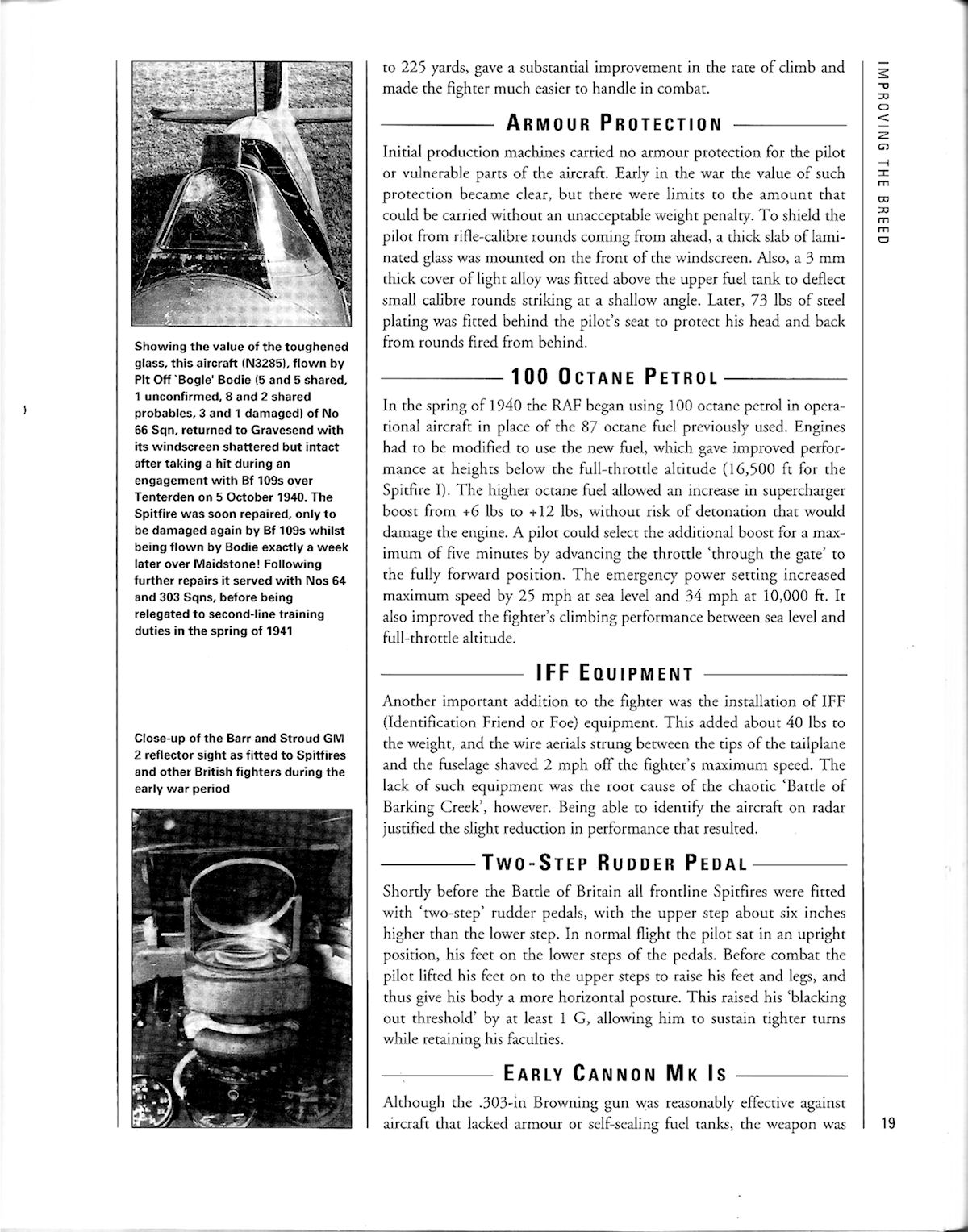
 |
|
#561
|
|||
|
|||
|
Dr. Alfred Price, Spitfire Mark I/II Aces 1939-41, (Osprey Publishing, 1996), p. 19.

|
|
#562
|
|||
|
|||
|
Quote:
All RAF aircraft were armed in case this happened including OCU units but OCU units didn't have 100 Octane fuel, so there was one combat using 87 octane. |
|
#563
|
|||
|
|||
|
Quote:
|
|
#564
|
|||
|
|||
|
It is possible that 245 (Northern Rhodesia) Squadron sent to Northern Ireland in July 1940 might have been still using 87 fuel as this was a backwater base well away from any combat.
I concur that Tomcat is most certainly trolling. |
|
#565
|
|||
|
|||
|
Quote:
5 OTU, Ashton Down and 6 OTU, Sutton Bridge both had Hurricanes while 7 OTU, Hawarden, seemed to have them for a short time http://www.rafweb.org/OTU_1.htm On 14 August there was another He 111, this one from 8./KG27, shot down by a combination of 213 Sqn Hurricanes and 7 OTU Spitfires (The Blitz Then and Now Vol 1, p. 194). Last edited by NZtyphoon; 03-10-2012 at 02:31 AM. |
|
#566
|
|||
|
|||
|
Your right, it was OTU my mistake, looks like there were two combats with 87 octane.
|
|
#567
|
|||
|
|||
|
Pips on the AHF has confirmed that he is the Pips from AAW.
http://forum.axishistory.com/viewtop...?f=69&t=187113 |
|
#568
|
|||
|
|||
|
Quote:
1. "International power of the Merlin I and II was 950/990 h.p. at 2,600 r.p.m. at 12,250ft, and the maximum take-off output was 890 h.p. at 2,850 r.p.m." The 1938 Flight article http://www.flightglobal.com/pdfarchi...0-%203453.html states that "Figures are being quoted on the Rolls-Royce stand for the Merlin R.M. 2M rated on 100 octane fuel....Merlin II, III and IV gave 1,015 h.p for take off on the same (100 octane) fuel". This was before the modifications made allowing the boost to be raised to +12. 2. (NB:This paragraph refers to June 1937) "The power output of the standard engine," writes Harold Nockolds, "was 1,030 b.h.p. at 3,000 r.p.m. at 10,250ft with plus 6 1/4 lb boost. (The following was left out) Solely by opening the throttle, raising the supercharger pressure, and using fuel of higher octane," he goes on [the petrol normally used at the time was 87 octane] "the engine was made to develop no less than 2,160 b.h.p at 3,200 r.p.m with the supercharger giving 27 lb/sq in boost (albeit this was over a short period of about four minutes - my added comment)....But Elliot and Hives were perhaps even more satisfied with a 15-hr endurance run at 1,800 b.h.p., 3,200 r.p.m. and 22 lb boost..." Last edited by NZtyphoon; 03-10-2012 at 10:13 PM. |
|
#569
|
|||
|
|||
|
Quote:
|
|
#570
|
|||
|
|||
|
Quote:
Last edited by NZtyphoon; 03-11-2012 at 08:58 AM. |
 |
|
|